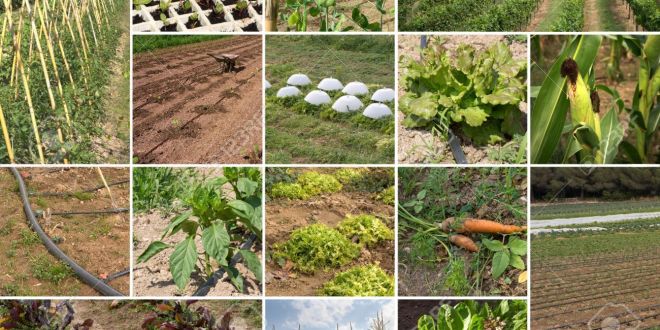Agriculture of Pakistan
Importat for CSS Pakistan Affairs Notes
Major Crop Seasons:
Pakistan has two crop seasons, “Kharif” being the first sowing season starting from April-June and harvested during October-December.
Rice, sugarcane, cotton, maize, moong, mash, bajra and jowar are Kharif crops.
Rabi, the second sowing season1, begins as on October-December and is harvested in April-May.
Wheat, gram, lentil (masoor), tobacco, rapeseed, barley and mustard are “Rabi” crops.
Pakistan’s agricultural output is closely linked with the supply of irrigation water.
Contribution of agriculture:
Agriculture accounts for 20.9 percent of the Gross Domestic Product (GDP) and is a source of livelihood of 43.5 percent of rural population.
Policy decisions needed to improve agriculture and government priorities.
To make agriculture more effective in supporting sustainable higher economic growth trajectory and reducing poverty in Pakistan, a policy framework is needed coupled with favorable socio-political climate, adequate governance, and sound macro-economic fundamentals. The prime focus of the government is on high value agriculture including:
- Horticulture.
- Livestock and fisheries.
- Improve farm level practices
- Developing links of farmers with markets and industry based on new technologies, ideas and future pathways for sustainable growth of agro industry.
The government is currently focusing to develop mechanisms for minimizing cost of production to increase farmers’ interest in agriculture and livestock.
Read Also: Four reasons why Pakistan and India should make peace now
As a policy, the government is committed to provide required infrastructure support to agro-processors with the aim to enhance value addition, job opportunities for growing young population, employing rural youth in developing services sector and entrepreneurship for value added growth of agriculture.
The Prime Minister’s Youth Loan Program: the areas like livestock, horticulture and fisheries as well as non-farm sector are likely to benefit from this program.
Causes of backwardness of agricultural sector:
Major factors underlying this slow performance include:
- Slow rate of technological innovation.
- Limited adoption of progressive farming techniques problems with quality, quantity and timeliness of input supply.
- Limited investment in construction and maintenance of infrastructure marketing and trade restrictions pest and livestock disease problems.
- Limited amounts of credit for agricultural production, processing and the lack of agriculture-specific financing.
Agriculture Problems in Pakistan and Their Solutions:
Economy of every state depends on three sectors i.e. agriculture, industry and commerce. These three are interrelated with each other as the progress or retrogress of one sector effects the other two.
Pakistan is an agricultural state thus agriculture gains are of much importance than any other sector.
Importance of this sector is manifold as it feeds people, provides raw material for industry and is a base for foreign trade. Foreign exchange earned from merchandise exports is 45% of total exports of Pakistan. It contributes 26% of GDP and 52% of the total populace is getting its livelihood from it. 67.5% people are living in the rural areas of Pakistan and are directly involved in it.
Read also: List of Founders and activists of the Pakistan Movement
Following are the major causes of agricultural problems in Pakistan:
- No mechanism has been adopted to eradicate the soil erosion and even after harvesting nothing is done to improve or restore the soil energy. Therefore, the fertility of soil is decreasing day by day. The thickness of fertile layer of soil in Pakistan is more than 6 inches but the average yield is lower than other countries where layer of fertile soil is only 4 inches.
- Water wastage is very high in our country. The archaic method of flood irrigation is still in practice in whole of the country which wastes almost 50 to 60 percent of water. A new irrigation system called drip irrigation system has been introduced in many parts of the world. This not only saves water but also gives proper quantity of water according to the needs of plants.
- Owing old methods of cultivation and harvesting, Pakistan has low yield per acre that means the average crop in Pakistan is just 1/4th of that of advance states. Whereas Nepal, India and Bangladesh are using modern scientific methods to increase their yield per acre. For this purpose, these states are using modern machines to improve their yield.
- The small farmers are increasing in our country as the lands are dividing generation by generation. So, there are large numbers of farmers who own only 4 acres of land. These small farmers do not get credit facilities to purchase seeds, pesticides, fertilizers etc. Additionally, a large area of land is owned by feudal and the farmers, who work on their lands, are just tenants. This uncertain situation of occupancy neither creates incentive of work nor does attract capital ivestment.
- Water logging and salinity is increasing day by day. No effective measures have been taken to curb it. As the storage capacity of the dams is decreasing so the water availability per acre is also decreasing. Therefore, the farmers are installing more and more tube wells to irrigate their crops. This is why salinity is becoming the major issue in most parts of Punjab and Sindh.
- Focusing more on land, crops and yield problems, the man behind the plough is always ignored.
While formulating the 5 or 10 years plan, no emphasis has been laid on the importance of solving the problems of farmers. Most of the farmers are illiterate, poor and ignorant. In this wake the loans issued by Zarai Taraqiati Bank Limited or other banks are used by them in other fields like repayment of debts, marriage of daughters etc., in spite of its befitting use in agricultural sector.
- The only mean of communication in rural areas is T.V or radio so it is urgently needed on the part of these mass communication resources to air the programs related to the new agricultural techniques and allied sciences. But these programs should be telecast in regional or local languages. Because lack of guidance is the main reason of farmers backwardness. The communication gaps between well qualified experts and simple farmers have not been bridged. Availability of these experts is not ensured in rural areas as they are reluctant to go there.
Pakistan is rich in fertile land yet the land is being wasted in different ways. 79.6% million hectors of land is cultivable whereas only 20.43% million hectors is cultivated. The reason can be described in two points.
A major area is owned by feudal. It is difficult to manage such a huge area so only that part is cultivated which is easy to manage, the rest is left ignored.
The rise of industrialization has given threat to this sector. People are migrating to cities and cities are expanding, thus new towns and colonies are constructed on fertile lands.
The irrigation system of Pakistan needs improvement as about 67% of the land is irrigated with canals. A part from these issues the monopoly of Foreign Big Wigs and false policies of government cannot be ignored.
Recommendations for improvement in agriculture:
- A new Agricultural policy must be framed in which following steps should be focused on.
- Small farmer must be focused. The major problems of small farmers should be solved first.
- Consumer friendly policy must be projected.
- Productivity enhancement programs must be constituted to adjust and support prices.
- Different Agricultural zones should be introduced. As Multan in famous for its Mangoes and citrus fruits so it must be made Mango, citrus zone
- Pakistan Agricultural storage & Services Corporation needs to take steps in this regard.
- Corporate farming like giving lands to Multinational companies like Nestle is also a good idea that will also help those who own a large area of fertile land but can’t manage it.
- Surplus vegetables and fruits must be exported immediately.
- This will also help in commercializing agriculture and farmers will be able to earn more revenue.
- Latest machinery should be provided to the farmers to increase the per acre yield. This provision should be on easy installments to facilitate the farmers.
- Modern techniques of irrigation can solve the problems of irrigation in Pakistan. This includes drip irrigation and sprinkle irrigation methods. By using this technique the farmers can save a huge sum of money which he pays for irrigation through tube wells and tractors.
- More dams should be constructed on Indus, Jhelum and Chenab rivers. This will enhance the storage capacity of water for irrigational purposes.








[…] Check Also: Agriculture of Pakistan | CSS Pakistan Affairs Notes […]
[…] Check Also: Agriculture of Pakistan | CSS Pakistan Affairs Notes […]